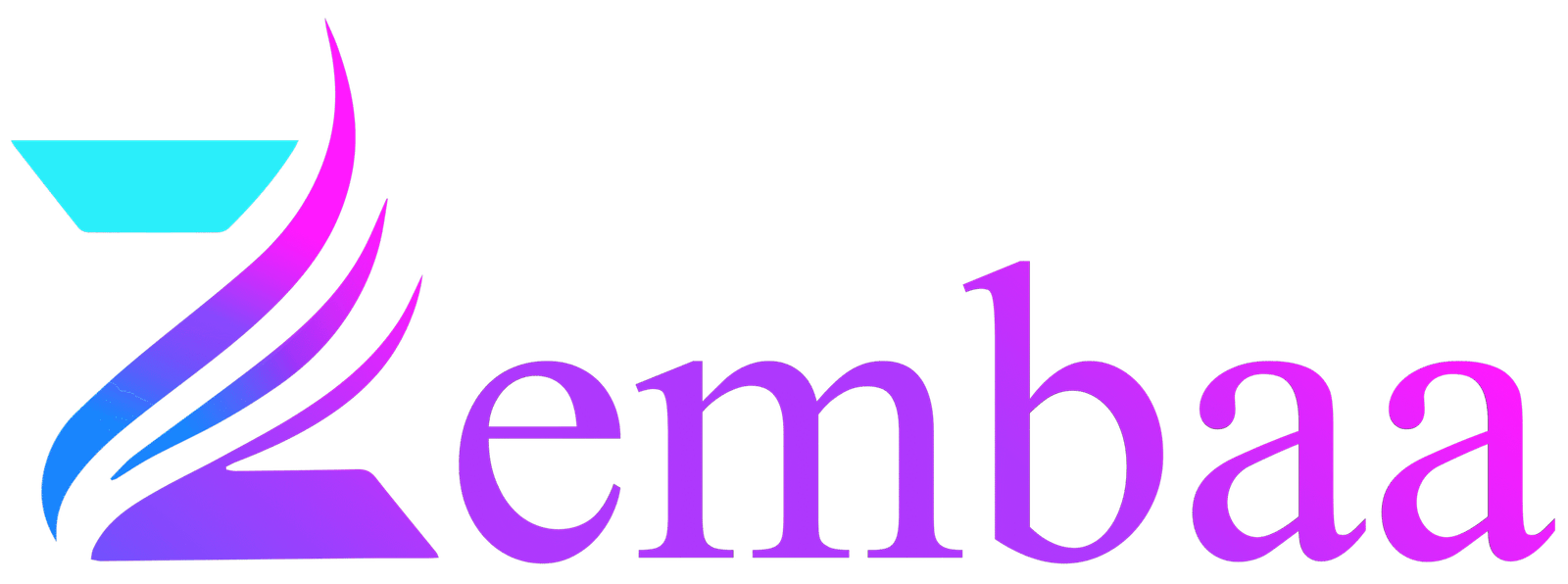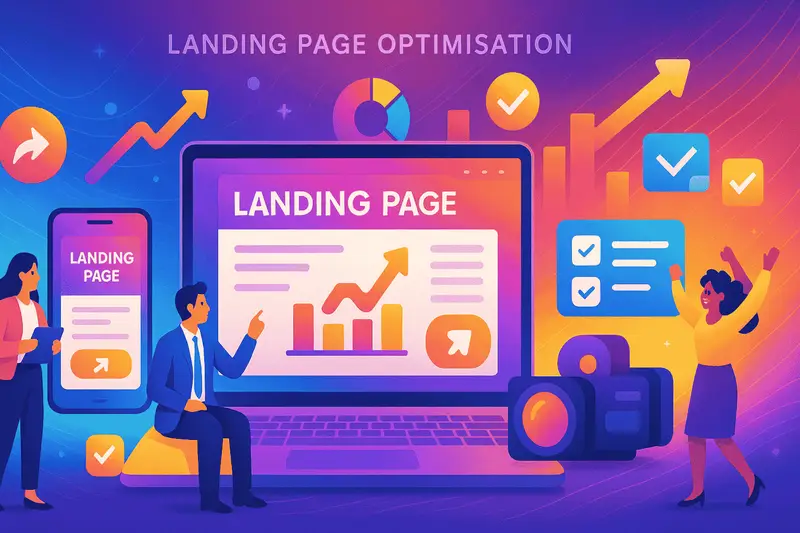Landing page optimisation is the secret weapon behind every successful digital marketing campaign in 2025. Whether you’re running ads, launching a product, or growing your email list, a high-converting landing page can make the difference between wasted budget and explosive ROI.
This ultimate guide will show you how to master landing page optimisation—from design and copywriting to analytics and A/B testing. Whether you’re a marketer, entrepreneur, or agency, these strategies will help you build landing pages that convert visitors into leads and customers.
What is Landing Page Optimisation?
Landing page optimisation is the process of improving every element of your landing page to increase conversions—whether that’s signups, sales, downloads, or another goal. It’s about using data, design, and psychology to turn more visitors into leads and customers.
Key elements of landing page optimisation:
- Clear, compelling headlines
- Persuasive copy and value proposition
- Eye-catching visuals and design
- Strong calls-to-action (CTAs)
- Fast load times and mobile responsiveness
- Trust signals (testimonials, reviews, badges)
- Data-driven testing and analytics
Why Landing Page Optimisation Matters in 2025
The digital landscape is more competitive than ever. Here’s why landing page optimisation is essential:
- Rising ad costs: Every click is more expensive—make them count.
- Short attention spans: You have seconds to capture interest.
- Mobile-first world: Most visitors are on smartphones.
- Personalisation: Users expect relevant, tailored experiences.
- Data-driven marketing: Optimised landing pages deliver measurable ROI.
According to Unbounce, the average landing page conversion rate is just 4.02%. Top performers, however, achieve 10% or more—thanks to landing page optimisation.
The Psychology Behind Landing Page Optimisation
Understanding the psychology of your visitors is at the heart of landing page optimisation. High-converting landing pages are built on a deep understanding of what motivates, reassures, and persuades your audience.
1. The Power of First Impressions
Research shows that users form an opinion about your landing page in just 0.05 seconds. That means your headline, hero image, and overall design must immediately communicate value and trust. Use bold, benefit-driven headlines and visuals that align with your offer.
2. The F-Pattern and Visual Hierarchy
Most users scan landing pages in an “F” pattern—starting at the top left, moving right, then scanning down the left side. Place your most important information (headline, CTA, benefits) along this path. Use larger fonts, contrasting colors, and whitespace to guide the eye.
3. Social Proof and Authority
Humans are wired to look for cues that others trust your brand. Add testimonials, reviews, case studies, and trust badges near your CTA. If you have media mentions or well-known clients, display their logos prominently.
4. The Principle of Reciprocity
Offer something valuable for free—like an eBook, checklist, or free trial—in exchange for contact information. This makes visitors more likely to convert and builds goodwill.
5. Reducing Anxiety
Address common objections and reduce friction. Use money-back guarantees, privacy assurances, and clear explanations of what happens after clicking the CTA.
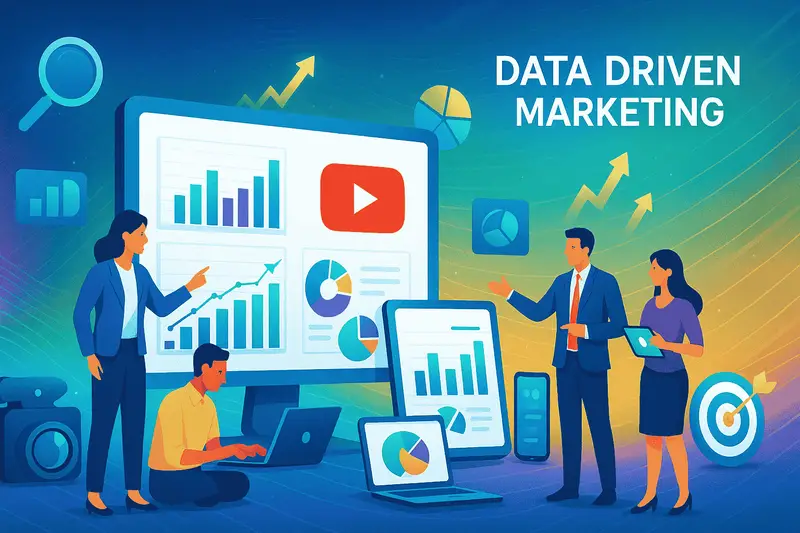
Advanced A/B and Multivariate Testing for Landing Page Optimisation
Basic A/B testing is just the beginning. To truly master landing page optimisation, use advanced testing strategies:
1. Multivariate Testing
Test multiple elements (headline, image, CTA, form fields) at once to see which combination performs best. This is especially useful for high-traffic pages.
2. Sequential Testing
Run a series of A/B tests, each building on the last. For example, start by testing headlines, then test CTA color, then test form length.
3. Personalization Testing
Use dynamic content to show different headlines, images, or offers based on user data (location, device, referral source). Test which personalized experiences drive the highest conversions.
4. Segmented Testing
Analyze test results by audience segment (new vs. returning visitors, mobile vs. desktop, traffic source). What works for one group may not work for another.
5. Statistical Significance
Don’t end tests too early. Use tools like Evan Miller’s calculator to ensure your results are statistically valid.
Landing Page Optimisation for Different Industries
E-commerce
- Use product videos and 360-degree images to showcase items.
- Highlight limited-time offers and free shipping.
- Add customer reviews and user-generated content for social proof.
SaaS and B2B
- Focus on pain points and solutions.
- Offer free trials, demos, or consultations.
- Use explainer videos and case studies to build trust.
Health and Wellness
- Use before-and-after photos and transformation stories.
- Highlight certifications and expert endorsements.
- Make booking or signup forms as simple as possible.
Education
- Use testimonials from students or parents.
- Offer downloadable guides or sample lessons.
- Make registration forms short and mobile-friendly.
Events and Webinars
- Use countdown timers to create urgency.
- Show speaker bios and past event highlights.
- Make the registration process frictionless.
Landing Page Optimisation: Integrating with Your Marketing Stack
A high-converting landing page doesn’t exist in a vacuum. Integrate your landing page with:
- CRM: Automatically add leads to your sales pipeline.
- Email Marketing: Trigger automated follow-up sequences.
- Analytics: Track every click, scroll, and conversion.
- Ad Platforms: Use UTM parameters to track ROI from each campaign.
- Chatbots: Offer instant support and answer FAQs.
Pro Tip:
Use hidden fields to capture source, campaign, and keyword data for every lead.
Landing Page Optimisation and SEO
While landing pages are often used for paid campaigns, SEO can drive valuable organic traffic:
- Use your focus keyword (“landing page optimisation”) in the title, meta description, and throughout the copy.
- Optimize images with descriptive alt text.
- Use schema markup for reviews, FAQs, and events.
- Build internal links from your blog and other pages.
- Create unique landing pages for different keywords, offers, or audience segments.
The Role of Video in Landing Page Optimisation
Video is one of the most powerful tools for landing page optimisation:
- Explainer Videos: Quickly communicate your value proposition.
- Demo Videos: Show your product or service in action.
- Testimonials: Let happy customers tell your story.
- Personalized Videos: Address the visitor by name or segment.
Best Practices:
- Keep videos under 2 minutes for maximum engagement.
- Place videos above the fold or near your CTA.
- Use captions for viewers watching without sound.
Landing Page Optimisation: Accessibility and Inclusivity
Make your landing page accessible to everyone:
- Use high-contrast colors and readable fonts.
- Add alt text to all images.
- Ensure forms are keyboard-navigable.
- Use descriptive labels and error messages.
- Test with screen readers and accessibility tools.
Inclusivity Tip:
Use diverse images and language that welcomes all users.
Landing Page Optimisation: The Power of Micro-Interactions
Micro-interactions are small animations or feedback cues that guide users and make your landing page feel more interactive:
- Button hover effects
- Progress bars on multi-step forms
- Animated checkmarks after form submission
- Subtle transitions when switching sections
These details can increase engagement and make your landing page more memorable.
Landing Page Optimisation: Building Trust in a Privacy-First World
With increasing privacy concerns, trust is more important than ever:
- Clearly state how you’ll use visitor data.
- Use SSL certificates and display security badges.
- Offer easy opt-out and unsubscribe options.
- Be transparent about cookies and tracking.
Pro Tip:
A privacy-first approach can actually increase conversions by reducing anxiety.
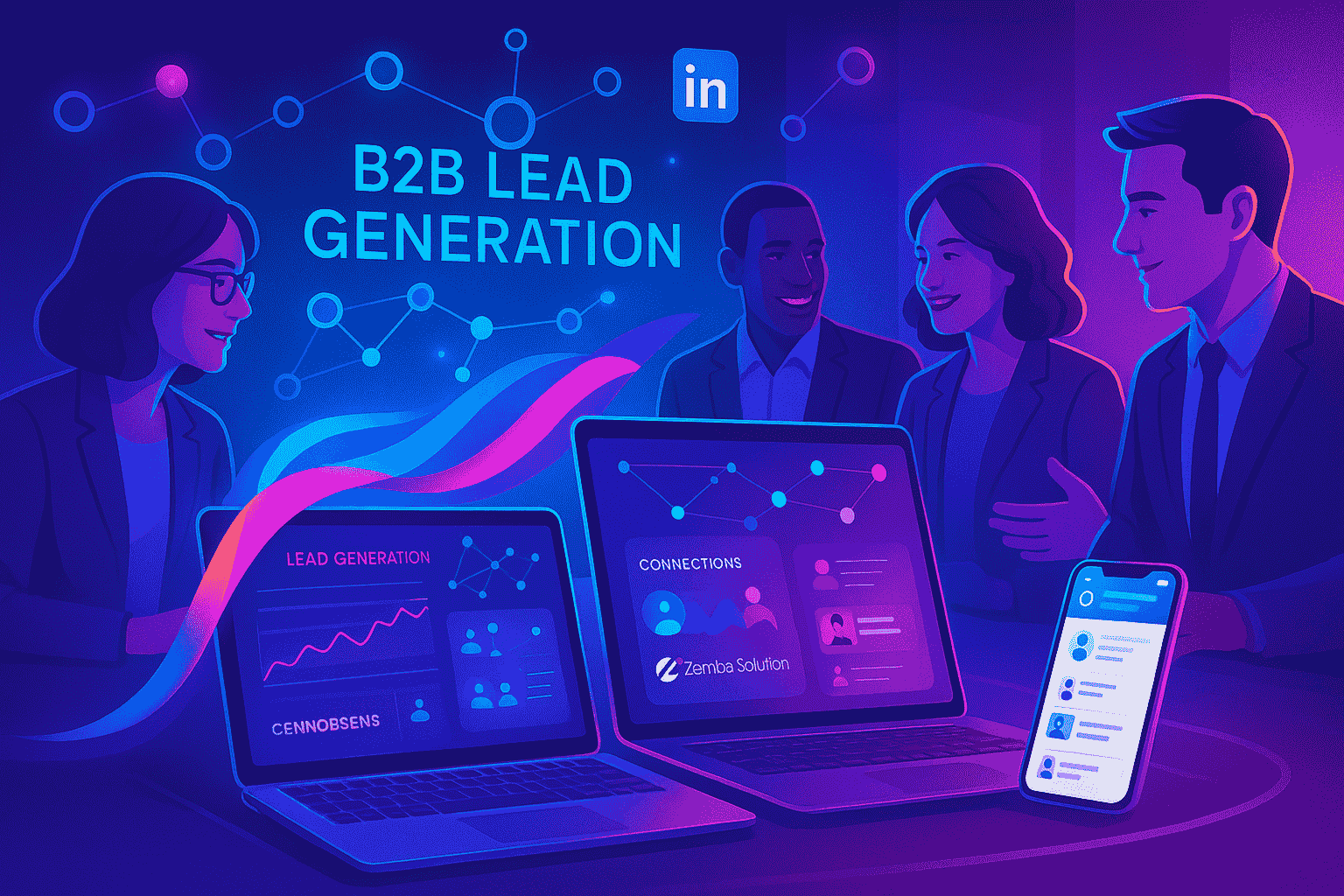
Landing Page Optimisation: Your 2025 Action Plan
- Audit your current landing pages for speed, clarity, and conversion rate.
- Set clear goals for each new landing page.
- Use data and analytics to inform every design and copy decision.
- Test, iterate, and personalize for different audiences and devices.
- Integrate with your marketing stack for seamless lead management.
- Stay updated on the latest trends in landing page optimisation, AI, and privacy.
Final Thoughts
Landing page optimisation is both an art and a science. By combining data, psychology, and creativity, you can build landing pages that not only look great but also drive real business results. The brands that win in 2025 will be those that never stop testing, learning, and optimizing.
Ready to build your next high-converting landing page? Start today, and let your data guide you to success!
7 Steps to Build a High-Converting Landing Page
1. Set a Single, Clear Goal
Every high-converting landing page has one job—get the visitor to take a specific action.
- Download an eBook
- Sign up for a webinar
- Start a free trial
- Request a quote
- Make a purchase
Action Step:
Define your landing page’s primary goal and remove all distractions.
2. Craft a Compelling Headline
Your headline is the first thing visitors see. It should:
- Clearly state the benefit or offer
- Use your focus keyword (“landing page optimisation”) if possible
- Be short, specific, and attention-grabbing
Example:
“Unlock 3X More Leads with Proven Landing Page Optimisation”
3. Write Persuasive, Benefit-Driven Copy
Great copy answers the visitor’s question: “What’s in it for me?”
- Focus on benefits, not just features
- Use bullet points for easy scanning
- Address pain points and objections
- Include a strong, clear call-to-action
Pro Tip:
Use the “so what?” test. For every feature, ask “so what?” until you reach the real benefit.
4. Use Eye-Catching Visuals
Images, videos, and graphics can boost conversions by making your offer more tangible and trustworthy.
- Use high-quality, relevant images (avoid stock photos)
- Show your product or service in action
- Use explainer videos or customer testimonials
Action Step:
A/B test different visuals to see what resonates with your audience.
5. Build Trust with Social Proof
Trust signals are essential for landing page optimisation.
- Add testimonials, reviews, or case studies
- Display trust badges (SSL, payment security, industry awards)
- Show logos of well-known clients or partners
- Use real names and photos for testimonials
6. Design for Simplicity and Focus
A cluttered landing page kills conversions.
- Use plenty of white space
- Keep forms short (ask only for essential info)
- Remove navigation menus and external links
- Use contrasting colors for CTAs
Pro Tip:
Follow the “one page, one purpose” rule.
7. Test, Measure, and Optimise
Landing page optimisation is never “done.”
- Use A/B testing to compare headlines, CTAs, images, and layouts
- Track key metrics: conversion rate, bounce rate, time on page
- Use heatmaps and session recordings to see how users interact
- Iterate based on data, not guesswork
Landing Page Optimisation: Design Best Practices
1. Above-the-Fold Impact
Put your most important message, offer, and CTA above the fold (visible without scrolling).
2. Visual Hierarchy
Guide the visitor’s eye from headline to CTA using size, color, and placement.
3. Mobile-First Design
Ensure your landing page looks and works great on all devices.
- Use large buttons and readable fonts
- Avoid pop-ups that block content
- Test on multiple screen sizes
4. Fast Load Times
A slow landing page kills conversions.
- Compress images
- Minimize scripts and plugins
- Use a reliable hosting provider
5. Accessibility
Make your landing page usable for everyone.
- Use alt text for images
- Ensure color contrast for readability
- Make forms keyboard-friendly
Copywriting for Landing Page Optimisation
1. Speak Directly to the Visitor
Use “you” and “your” to make the copy personal.
2. Use Action-Oriented Language
Start CTAs with strong verbs: “Get,” “Download,” “Start,” “Join.”
3. Address Objections
Anticipate and answer common questions or concerns.
4. Create Urgency
Use scarcity (“Only 5 spots left!”) or time-limited offers (“Ends tonight!”) to encourage action.
5. Keep It Concise
Every word should move the visitor closer to conversion.
Landing Page Optimisation for Mobile
With over 60% of traffic coming from mobile, mobile optimisation is non-negotiable.
- Use a single-column layout
- Make buttons large and easy to tap
- Keep forms short and simple
- Use mobile-friendly images and videos
- Test load speed on 4G and 5G networks
A/B Testing and Analytics for Landing Page Optimisation
1. What to Test
- Headlines and subheadings
- CTA text and color
- Images and videos
- Form length and fields
- Social proof placement
- Page layout
2. How to Test
- Use tools like Google Optimize, Optimizely, or VWO
- Test one element at a time (A/B) or multiple (multivariate)
- Run tests until you have statistically significant results
3. Key Metrics
- Conversion rate
- Bounce rate
- Average time on page
- Click-through rate (CTR)
- Cost per conversion
4. Analyzing Results
- Use heatmaps (Hotjar, Crazy Egg) to see where users click and scroll
- Watch session recordings to spot friction points
- Iterate and retest for continuous improvement
Landing Page Optimisation for Different Campaigns
1. Lead Generation
- Offer a valuable lead magnet (eBook, checklist, webinar)
- Use a short form and clear CTA
- Follow up with automated email sequences
2. E-commerce
- Highlight product benefits and reviews
- Use urgency (limited stock, countdown timers)
- Offer free shipping or discounts
3. SaaS and B2B
- Focus on pain points and solutions
- Use demo requests or free trials as CTAs
- Include case studies and client logos
4. Event Registration
- Use a compelling headline and event details
- Show speaker bios and testimonials
- Make registration quick and easy
5. App Downloads
- Highlight app features and benefits
- Use screenshots and video demos
- Link directly to app stores
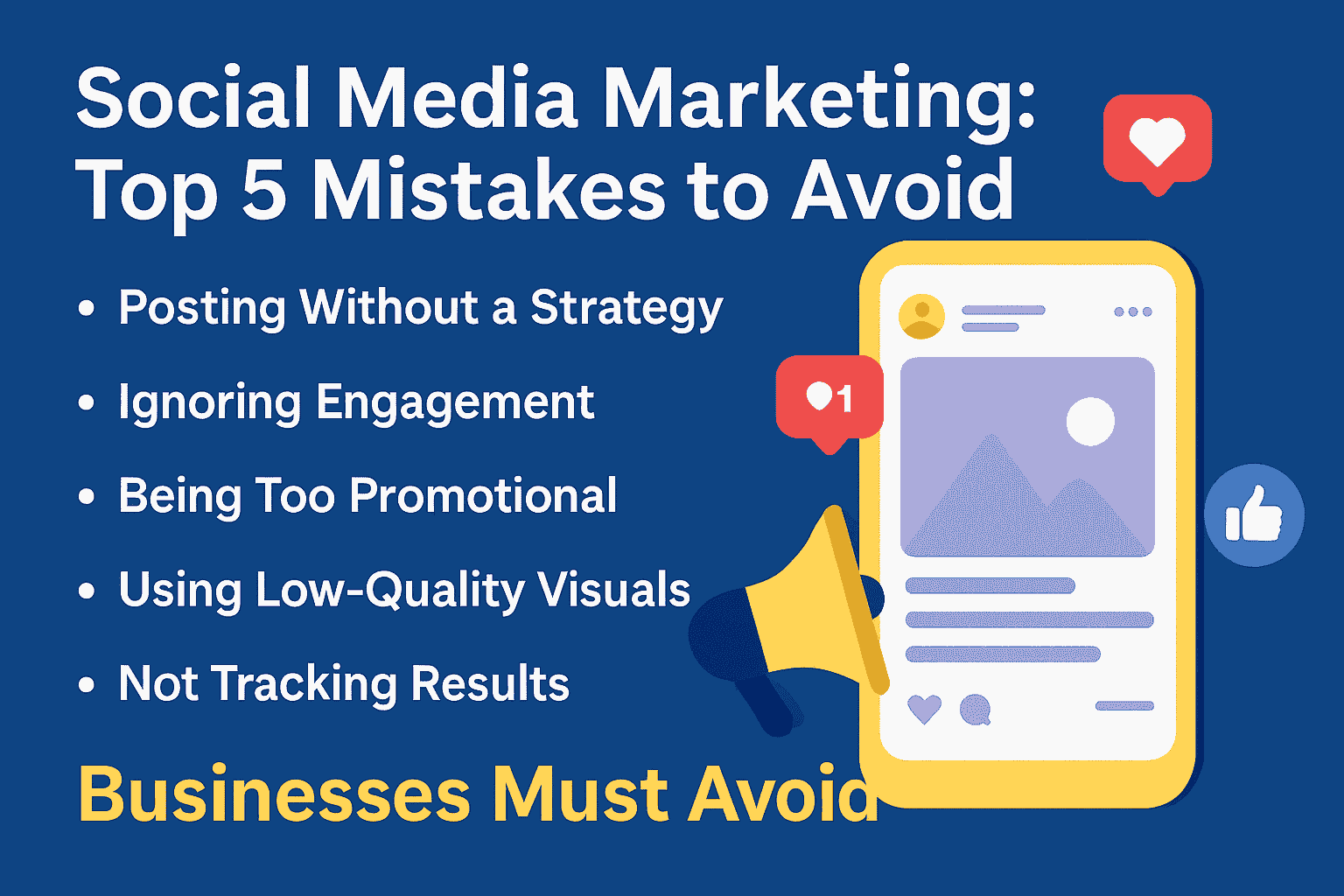
Common Landing Page Optimisation Mistakes
- Too many CTAs or distractions
- Slow load times
- Unclear value proposition
- Long or complicated forms
- Lack of trust signals
- Ignoring mobile users
- Not testing or iterating
- Using generic stock images
- No clear headline or CTA
- Not tracking conversions
Case Studies: High-Converting Landing Pages
1. Shopify
Shopify’s landing pages use a clear headline, benefit-driven copy, a single CTA, and social proof (logos, testimonials). Their A/B testing culture has helped them achieve conversion rates above 10%.
2. HubSpot
HubSpot’s lead magnet pages are optimized for simplicity, with short forms, strong CTAs, and trust badges. They use dynamic content to personalize offers for each visitor.
3. Airbnb
Airbnb’s host signup page uses a step-by-step process, personalized earnings calculator, and real host testimonials to drive conversions.
4. Unbounce
Unbounce’s own landing pages are a masterclass in landing page optimisation, with bold headlines, clear CTAs, and continuous A/B testing.
5. Dropbox
Dropbox’s minimalist landing page focuses on a single CTA (“Sign up for free”), a clear value proposition, and a simple design that removes all distractions.
Advanced Landing Page Optimisation Strategies for 2025
- AI-Powered Personalization: Use AI to show different content, offers, or CTAs based on user data.
- Dynamic Content: Change headlines, images, or testimonials based on traffic source or user behavior.
- Video CTAs: Use personalized video messages to boost engagement.
- Chatbots: Add chatbots for instant support and lead qualification.
- Voice Search Optimization: Make your landing page accessible via voice assistants.
- Interactive Elements: Use quizzes, calculators, or assessments to engage users and collect data.
- Progressive Profiling: Ask for more info over time, not all at once.
Top Tools for Landing Page Optimisation
- Unbounce: Drag-and-drop builder, A/B testing, and analytics.
- Instapage: Personalization, heatmaps, and collaboration tools.
- Leadpages: Templates, integrations, and conversion tracking.
- HubSpot Landing Pages: CRM integration and smart content.
- Google Optimize: Free A/B testing tool.
- Hotjar/Crazy Egg: Heatmaps and session recordings.
- Optimizely/VWO: Advanced experimentation and analytics.
Landing Page Optimisation: Building a Data-Driven Culture
A successful landing page optimisation strategy isn’t just about tools and tactics—it’s about building a culture that values data at every level of your organization.
1. Train Your Team
Invest in conversion rate optimization (CRO) and analytics training for your marketing, design, and development teams. Make sure everyone understands how to interpret data and use it to make decisions.
2. Break Down Silos
Encourage collaboration between departments. Share data and insights across teams to create a unified view of the customer journey.
3. Make Data Accessible
Use dashboards and visualization tools to make data easy to understand and act on. Avoid hiding valuable insights in spreadsheets or reports that no one reads.
4. Encourage Experimentation
Foster a culture of testing and learning. Reward teams for running experiments, sharing results, and iterating based on data.
5. Align Data with Business Goals
Ensure that your landing page optimisation efforts are always tied to your company’s broader objectives. Don’t collect data for data’s sake—use it to drive real business outcomes.
The Future of Landing Page Optimisation
The future of landing page optimisation is bright. As technology evolves, marketers will have even more powerful tools to understand, engage, and convert customers.
- AI will automate more tasks, freeing up time for creativity and strategy.
- Personalization will become even more precise, with real-time data driving every interaction.
- Privacy and ethics will be at the forefront, with brands building trust through transparency and responsible data use.
- Voice search, visual search, and IoT devices will generate new types of data and new opportunities for marketers.
Conclusion: Your Next Steps for Landing Page Optimisation
Landing page optimisation is the future of digital marketing success. By collecting, analyzing, and acting on data, you can create personalized experiences, optimize campaigns, and drive real ROI.
Action Steps:
- Set clear goals and KPIs.
- Audit and integrate your data sources.
- Segment your audience and personalize your landing pages.
- Test, optimize, and iterate based on data.
- Measure ROI and refine your strategy.
- Build a data-driven culture in your organization.
- Stay updated on landing page optimisation trends and tools.
Ready to grow your business? Start implementing these landing page optimisation strategies today and watch your results soar in 2025 and beyond!
Need Help Elevating Your Digital Brand?
Ready to implement a future-ready brand strategy? Our expert team specializes in crafting compelling online identities that convert browsers into believers.
👉 Contact Us Today for a free 15-minute consultation.
